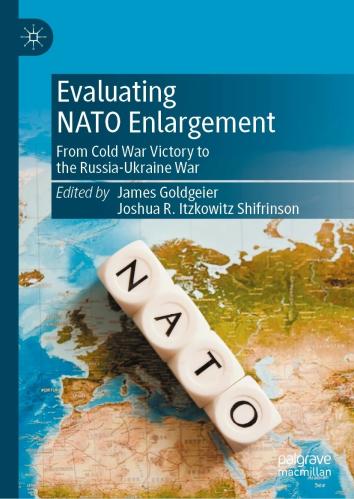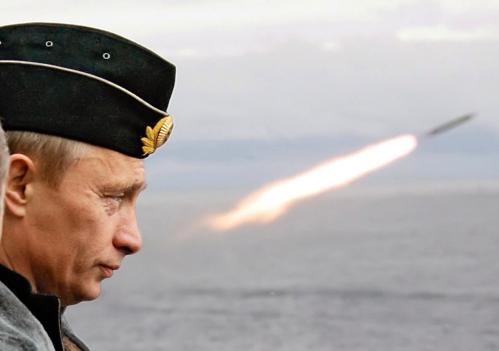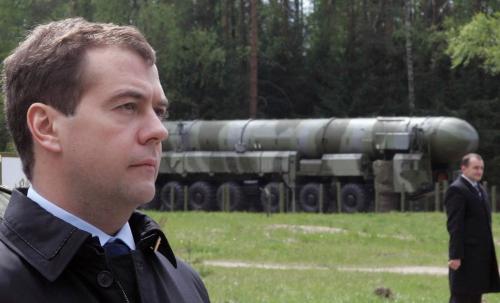House and Senate conferees recently agreed on language to authorize the Pentagon to spend $58 million in response to the Russian violation of the Intermediate-range Nuclear Forces (INF) Treaty. That would be a waste of money and play into Moscow’s hands, argues Steven Pifer. This post originally appeared in The Hill.
As reported in The Hill, House and Senate conferees agreed last week on language to authorize the Pentagon to spend $58 million in response to the Russian violation of the 1987 Intermediate-range Nuclear Forces (INF) Treaty, including through developing a U.S. intermediate-range missile. That would be a waste of money and play into Moscow’s hands.
The INF Treaty bans the United States and Russia from testing or possessing ground-launched cruise or ballistic missiles of intermediate range (500 to 5,500 kilometers, or roughly 300 to 3,300 miles).
Within three years after the treaty’s entry into force, nearly 2,700 intermediate-range missiles were destroyed. Now, unfortunately, Russia has violated the treaty by testing and deploying an intermediate-range ground-launched cruise missile (GLCM).
The U.S. government should respond to this for two reasons: first, to try to persuade the Kremlin to come back into compliance with the treaty and second, to ensure that the Russian violation confers no significant military advantage.
Developing an intermediate-range GLCM, as long as it is not tested, would not violate the treaty. But it would set the United States on a course to do so. That would not provide a smart response to Russia’s treaty violation.
First, developing, testing, producing and deploying a GLCM would cost a lot more than $58 million—in the billions of dollars. Given the demands already facing the Pentagon’s budget—such as readiness needs, modernization of strategic nuclear forces and increasing the size of the Navy—it is difficult to see where that money could be found.
Second, if the money could be found, fielding a new GLCM would take years, hardly a timely answer to Russia’s current violation.
Third, even if the United States could find the money and field the missile, it would not concern the Kremlin unless deployed within range of Russia. Nothing suggests that NATO, Japan or South Korea would agree to accept deployment. U.S. intermediate-range GLCMs based at Fort Sill, Oklahoma will not worry the Russians much.
So, proceeding down the path of a U.S. GLCM would waste a lot of money that could go toward more important defense priorities.
It would also play into Moscow’s hands. The Russians have consistently denied violating the treaty. Presumably due to sources and methods issues, the U.S. government has made little information public about how it concluded there was a violation.
If Washington proceeds as the congressional language now suggests, the Kremlin will continue to maintain its innocence, citing the lack of evidence, and point to U.S. actions as indicating that the United States intends to violate and leave the treaty.
Moscow would welcome an American decision to quit the agreement. The world would see Washington as responsible for the treaty’s demise, and it would leave Russia free to deploy its intermediate-range missiles openly, without the pretense of adhering to the accord.
Congress should not suggest that the United States do the Kremlin’s work for it.
The Trump administration has better ways to respond to the Russian INF Treaty violation. Instead of proceeding down the GLCM path, the U.S. military can deploy existing conventional air- and sea-based cruise missiles to Europe and nearby waters.
The U.S. Air Force could regularly station conventional B-1 bombers at the British airbase at Fairford (which can accommodate U.S. bombers). It could also deploy Joint Air-to-Surface Stand-off Missiles (JASSMs) to arm the bombers.
The U.S. Navy could increase the frequency of deployments to northern European waters of warships and submarines carrying sea-launched cruise missiles. A visit to the North Sea by the USS Georgia, a former Trident ballistic missile submarine converted to carry up to 154 sea-launched cruise missiles, would certainly get noticed in Moscow.
These responses to the Russian violation would prove cheaper, faster to deploy, more acceptable to NATO allies and—if Russia came back into compliance—easier to reverse than a new GLCM.
In parallel, the State Department should approach NATO allies to turn up the diplomatic heat on the Kremlin. While this is a treaty issue between Washington and Moscow, the Russian missile cannot reach the United States. It was designed and built to strike neighboring countries, including in Europe.
Russia’s violation of the INF Treaty calls for a response. But we should be smart about it.









Commentary
U.S. response to Russian treaty violation plays into Moscow’s hands
November 15, 2017